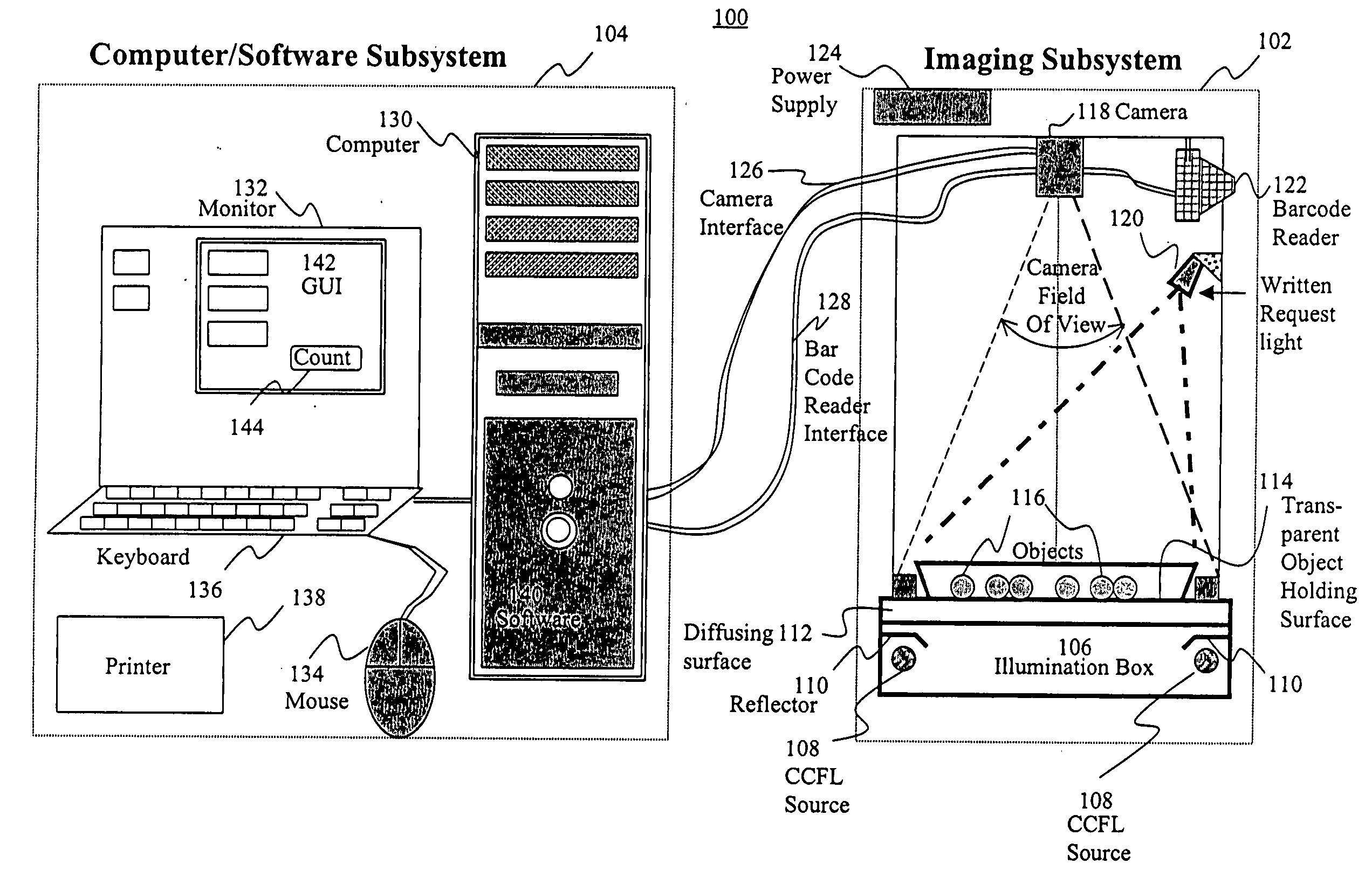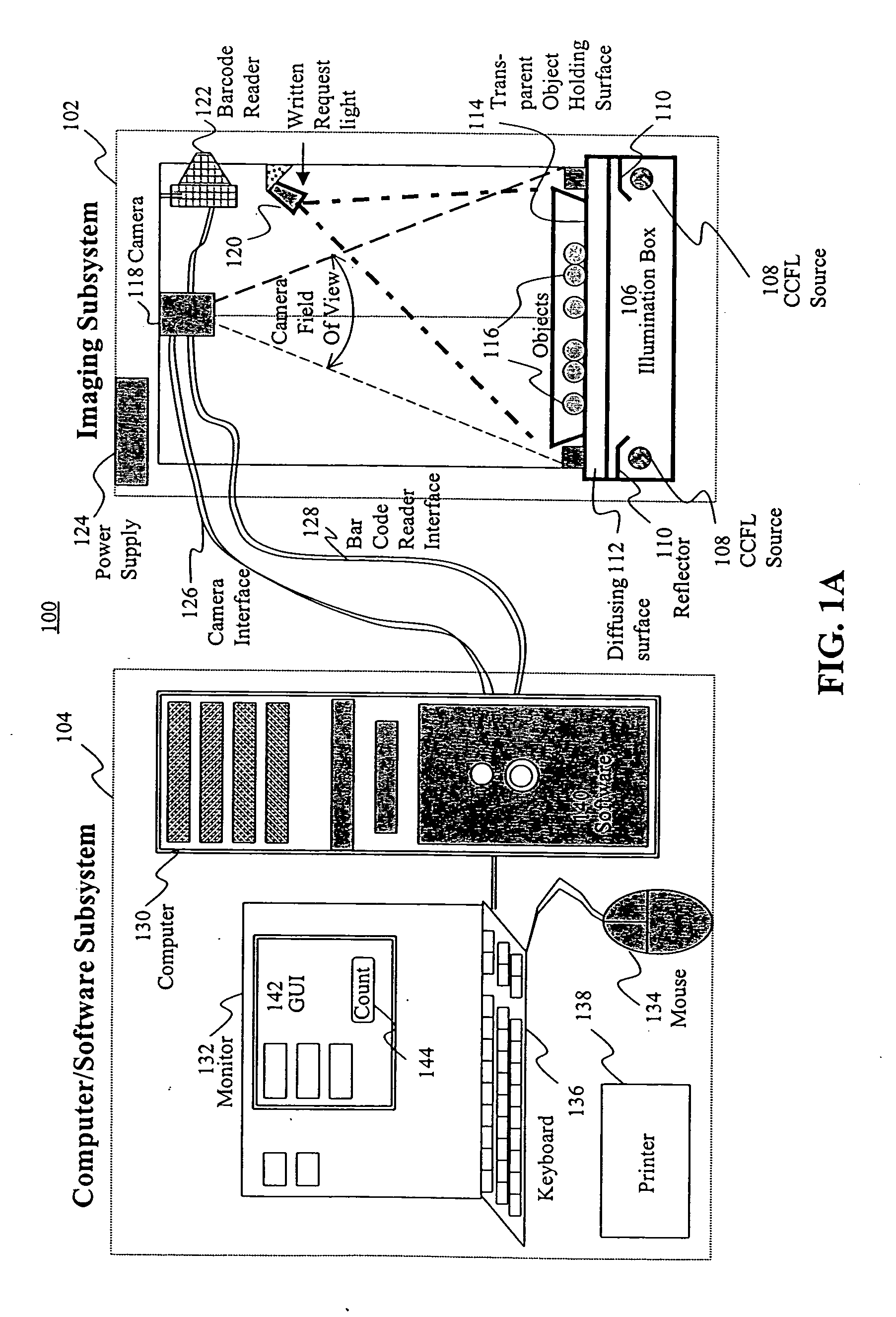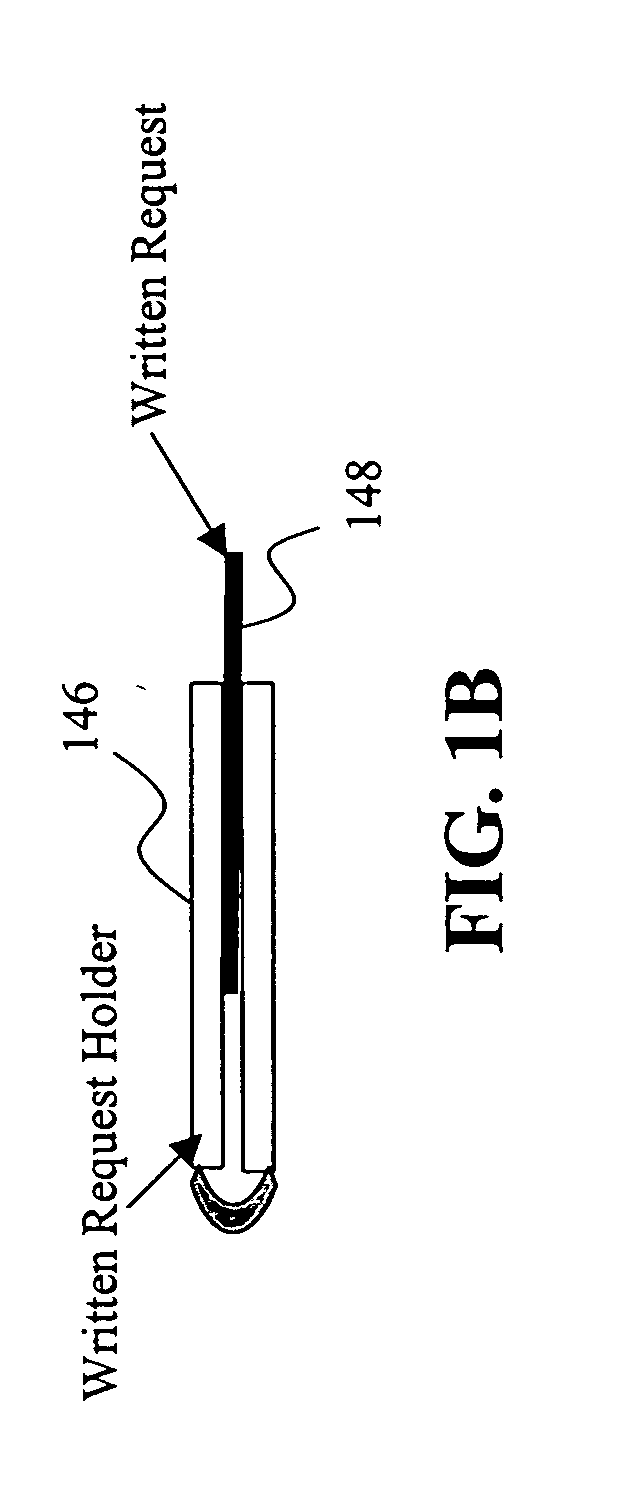Automatic digital object counting and verification system and associated method
a digital object and counting technology, applied in the field of automatic counting and verifying objects, can solve the problems of human error and inaccurate counting, cost of packaging and possible errors, and inability to accurately count objects, etc., to achieve the effect of facilitating the generation of digital images
- Summary
- Abstract
- Description
- Claims
- Application Information
AI Technical Summary
Problems solved by technology
Method used
Image
Examples
second embodiment
[0036] In the present invention, object holding surface 114 is a multiplicity of trays carried by a conveyor (not shown) or a rotary mechanism (not shown) and passing over diffusing surface 112 in a stop-and-go motion. The conveyor or rotary mechanism advances the trays and stops when each tray reaches an appropriate imaging position (i.e., in the field of view of the digital imaging unit), thereby allowing imaging subsystem 102 to be used in a production environment to count the objects in each tray. In these stop-and-go conveyor or rotary configurations, electromagnetic radiation sources 108 provide continuous exposure to be detected by, for example, a CCD-based digital camera.
third embodiment
[0037] In a third embodiment, also suitable for a production environment, a conveyor or rotary mechanism continuously moves trays holding objects 116, and digital imaging unit 118 is a CCD-based digital camera. This embodiment requires a short duration flash exposure of the radiation provided by sources 108. This flash exposure mode allows a sharp digital image to be captured by CCD-based digital camera 118, with almost no fuzzy edges developing at the edges of the objects normal to the direction of the continuous motion of the conveyor / rotary mechanism. The shorter the duration of the flash, the less visible this fuzzy edge effect will be.
[0038] In a fourth embodiment of this invention, which is again suitable for a production environment, trays holding objects 116 move continuously in uniform motion by a conveyor or rotary mechanism, and digital imaging unit 118 includes a linear lens array (e.g., Selfoc lens array), aligned with a linear photodiode array. In the fourth embodiment...
PUM
 Login to View More
Login to View More Abstract
Description
Claims
Application Information
 Login to View More
Login to View More - R&D
- Intellectual Property
- Life Sciences
- Materials
- Tech Scout
- Unparalleled Data Quality
- Higher Quality Content
- 60% Fewer Hallucinations
Browse by: Latest US Patents, China's latest patents, Technical Efficacy Thesaurus, Application Domain, Technology Topic, Popular Technical Reports.
© 2025 PatSnap. All rights reserved.Legal|Privacy policy|Modern Slavery Act Transparency Statement|Sitemap|About US| Contact US: help@patsnap.com



